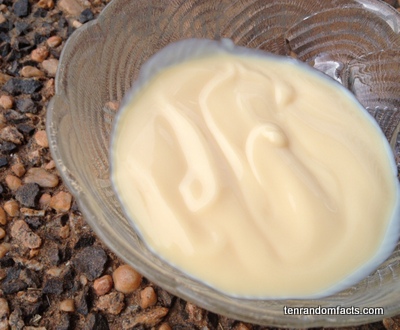Custard is quite exquisite.
- Custard is an edible substance most commonly used in desserts, and it can range from a runny, pouring liquid, up to a firm and thick consistency.
- Traditional custard is primarily made of eggs, which thickens the mixture, and a dairy product, such as milk, although cream is often used, and vanilla and sugar is commonly incorporated.
- Custard is commonly used in desserts, like tarts and trifle, and served hot or cold with puddings, although it can also be used in savoury cuisine, and is the main ingredient for quiche.
- ‘Custard’ comes from the word ‘croustade’, a Middle French word, which in turn comes from the Latin word ‘crustāre’, meaning ‘crust’, referring to the pastry or tart it was often used in.
- Making egg based custard can be a little tricky, as it can easily burn or spoil, and if it reaches temperatures of more than 80°C (176°F), it can cause curdling, while at 70°C (158°F) it will usually start to set.

- Custard has been historically made throughout Medieval Europe, typically eaten in tarts, but it was not unknown in Asia during the same period.
- Powdered custard mix is absent of egg, and was first invented in 1837 by Alfred Bird, from Birmingham, England, who originally made it for his wife who was allergic to eggs, although he started selling it commercially and it became a great success.
- Powdered custard is usually purchased in a packet from a grocery store, and it usually contains corn starch, although other starch products are sometimes used; colour; and flavour; and milk is heated and added to the powder to make it a thickened liquid.
- Custard is very high in cholesterol, and is high in riboflavin, phosphorus, selenium and calcium.
- Longlife and ready made custards have become popular, and are commonly available in supermarkets, and they can be used as is, or heated and poured over desserts.
Bibliography:
Custard, 2013, British Food: A History, http://britishfoodhistory.wordpress.com/2012/02/18/custard/
Custard, 2014, Wikipedia, http://en.wikipedia.org/wiki/Custard
Olver L, Food Timeline FAQs: puddings, custards, & creams, 2014, Food Timeline, http://www.foodtimeline.org/foodpuddings.html





